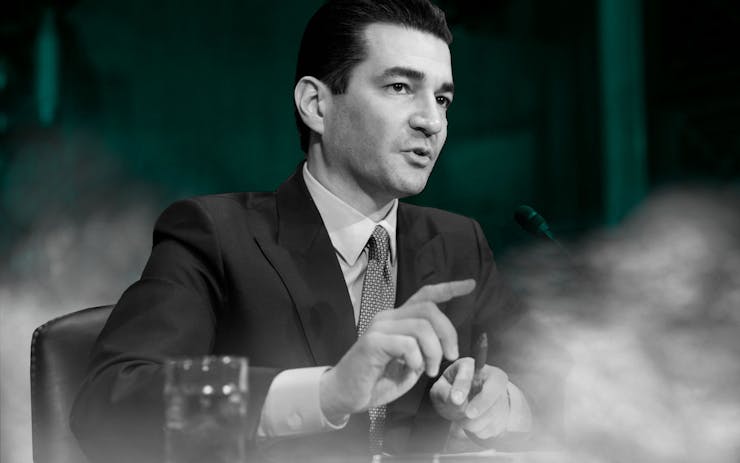In 1989, a mysterious figure known as Dr. Lunglife sent High Times a set of detailed instructions for transforming a handful of easily obtained equipment into a low cost vaporizer. He included a guide to making a highly potent cannabis concentrate that optimized the contraption’s effectiveness.
Soon thereafter, the magazine published a letter to the editor from K.O. of Clarksville, Mississippi:
Just thought I’d let you know I built one of Dr. Lunglife’s vaporizers. Tell the good doctor that it has worked well for me. Now if I can just get a really long extension cord for the Hash Bash in Ann Arbor.”
30 years of user data on vaping
Clearly, many cannabis enthusiasts must have started experimenting with vaporization around this same time.
People have been vaping THC for 20 years. Clearly it's not the THC that's causing these new lung problems.
Commercial products required a little more time to make it to market. The first Volcano vaporizer, made by Storz & Bickel, appeared in the US in 2003. The first pen-size vaporizers appeared around 2006. Cannabis vape pens hit the American scene starting around 2010.
That gives us—at the very least—a solid three decades of anecdotal user data to work with when evaluating any potential harms involved.
So when a rash of people started getting seriously or even fatally ill after using vape pens earlier this year, it was obvious that something other than cannabis must be the culprit. The overwhelming number of cases of VAPI, vaping associated pulmonary injury, have been attributed to counterfeit products produced and distributed illegally without any regulatory oversight whatsoever.
Tainted illegal THC pens are suspect
At Leafly, our reporting team tracked these dangerous counterfeit pens from production to sale. We found a supply chain operating wholly outside the law and with a blatant disregard for public health. Theories on what’s causing VAPI range from dangerous additives to poorly manufactured pens, or possibly some combination of the two. No evidence has emerged to show THC, CBD, or any other cannabinoid is to blame.
Peer-reviewed research on the relative safety of vaping goes back 15 years.
Meanwhile, we have peer-reviewed evidence favoring vaporizers over leaf smoking that dates back 15 years. In 2004, a clinical study of cannabis vapor versus cannabis smoke found that “vaporizers can efficiently deliver cannabinoids while eliminating or drastically reducing other smoke toxins.” This study came within the context of cannabinoid delivery to medical patients, some with compromised immune systems, who are looking for the healthiest possible delivery mode for their condition.
So no matter what the cause of the current deadly outbreak, it surely isn’t cannabis. To suggest that cannabis—in vapor form or otherwise—has suddenly turned deadly is utter nonsense. It’s also irresponsible.
Perhaps someone should tell the rest of the media.
Worst of the worst: WSJ
I’ve seen plenty of examples of poor, misinformed, and downright false reporting on the VAPI situation. But nothing dropped my jaw with the force of an op-ed published last week by the Wall Street Journal.
Written by Scott Gottlieb, the former FDA head who stepped down earlier this year, the piece began with a weirdly Orwellian headline. Leafly’s David Downs, who’s been breaking real news on this story for the past two months, noted:
There, I fixed it for you @WSJopinion cc @ScottGottliebMDpic.twitter.com/dF7WW9fqSZ
— David Downs (@davidrdowns) October 11, 2019
The word you seek is ‘tainted’
Still, at least the article’s first line is accurate: “Doctors have linked a tragic wave of lung injuries and deaths to the vaping of tainted marijuana concentrates.” But from there on out, it’s as if the word tainted doesn’t exist.
Gottlieb contorts logic and reason beyond recognition in a counter-factual attempt to conflate the regulated cannabis market in legal states like California with the unregulated illicit market in counterfeit vape pens that have been making people sick.
The former FDA head implies that THC is dangerous because tainted THC pens are deadly. Which makes as much sense as a former leader of the FDA claiming that H20 is dangerous because people in Flint are drinking lead-tainted water.
Former FDA head says: legalize
Gottlieb’s argument is so all-over-the-place that it’s hard to dissect. But we shouldn’t ignore his proffered solution to the problem. Which is basically to legalize cannabis nationally: “The protracted hand-wringing over federal cannabis policy must stop,” he wrote. “The tragic spate of fatalities related to vaping of pot concentrates means the time has come for Congress and the White House to stop blowing smoke and clear the air.”
Hold on a minute. The Wall Street Journal headline says legalization is to blame for VAPI deaths. And yet the author calls for nationwide legalization.
How does that make sense?
Fed official doesn’t trust state officials
According to Gottlieb, the real problem is the discrepancy between state and federal law. “Federal agencies exert little oversight, and regulation is left to a patchwork of inadequate state agencies,” he wrote. (Actually, federal agencies exert no regulatory oversight of cannabis in legal states.) “The weak state bodies sanction the adoption of unsafe practices such as vaping concentrates, while allowing an illegal market in cannabis to flourish.”
Gottlieb’s solution is to have the federal government decide who gets to consume what kind of cannabis. “The ship has probably sailed on legalization for recreational use,” he wrote. “But regulation of the potency of THC compounds, the forms they take, how they’re manufactured, and who can make purchases ought to be possible…”
Let me see if I’ve got this straight. Gottlieb thinks banning legally produced cannabis concentrates—which haven’t sickened consumers—is the way to stop people from using illegal vape pens that have killed more than two dozen people and sickened hundreds?
Yup.
The AP stumbles too
Had Gottlieb’s Wall Street Journal op-ed been an isolated incident, it would be easy to dismiss. But here’s how the Associated Press headlined a recent story by veteran journalist Mike Stobbe.
US probe of vaping illnesses focuses on THC from marijuana. ‘Dank Vapes’ labeling mentioned by most of patients in Illinois and Wisconsin (two of the states with the most cases). https://t.co/tZRz3GFbqy
— Mike Stobbe (@MikeStobbe) September 27, 2019
Again, the first sentence is technically accurate. But neither he nor his editors at the AP deign to include the word tainted. “U.S. health officials said Friday that their investigation into an outbreak of severe vaping-related illnesses is increasingly focused on products that contain the marijuana compound THC,” Stobbe wrote.
Later, the same article noted that CDC officials said they “didn’t know if the THC is the problem or some other substance added to the vaping liquid.”
This is where mentioning that millions of people have been vaporizing cannabis for three decades without any confirmed cases of VAPI would provide vital context. These lung injuries didn’t start turning up until this year. That information would be really helpful.
But no.
Where are the non-government experts?
Nor did the AP’s reporter—or other authors of similarlyflawed work—reach out to experts who might have cut through the BS, explained the issue, and gotten to the heart of the matter. There’s an entire team at Project CBD, the California-based group considered the nation’s leading authorities on the suddenly-hot cannabinoid. They’ve been warning about the potential dangers of toxic vape oil additives, particularly thinning agents and flavoring additives, since 2015.
Martin Lee, co-founder of Project CBD, has said this about the current vaping crisis: “Let’s be clear: inhaling additive-free, artisanal whole plant cannabis oil with a well-made vaping device is just as safe, if not more so, than smoking organically grown cannabis.”
Lee does share some concerns with Scott Gottlieb. Lee worries that vape pens have been too loosely regulated in legal adult-use states, particularly when it comes to the use of thinning agents. But he expresses that concern without shifting the blame onto cannabis, THC, or legalization—a false narrative Lee attributes to prohibitionists who are working “to spin the vaping tragedy to advance their own agenda.” Lee recently wrote.
“The solution isn’t to ban cannabis vaping across the board,” Lee added. “Such a misguided policy would be both impractical and counterproductive, boosting black market commerce and increasing risks for users… Rather… state health officials should implement a rigorous regulatory program that prioritizes public health and raises the safety standards for all edibles and food supplements.”
There you go, rest of the media. I fixed it for you.





